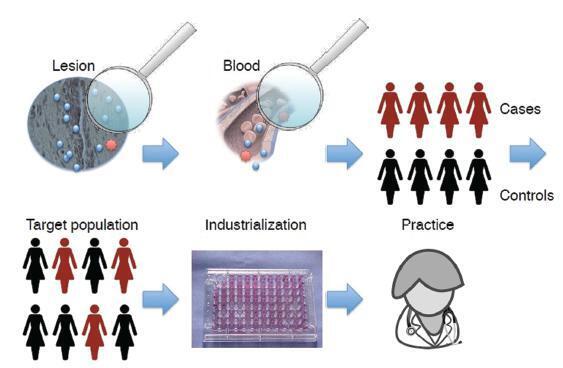Revista Brasileira de Ginecologia e Obstetrícia. 2017;39(3):91-93

Endometriosis is typically a symptomatic disease, and the symptoms often manifest as dysmenorrhea, dyspareunia, chronic pelvic pain, and/or infertility. Deep infiltrating endometriosis can also produce cyclic urinary or intestinal complaints. Nevertheless, the symptoms of endometriosis are not specific, and may be associated with many other different conditions. Severe dysmenorrhea in adolescent girls may be underestimated by health care providers and accepted as a physiological fate. Thus, patients can spend years without the accurate diagnosis and the proper treatment, with a tremendous negative impact on their quality of life.
The use of a non-invasive biomarker would bring a remarkable advance to the management of endometriosis. A good test could shorten the time lapse between the onset of the symptoms and the beginning of the treatment, and allow monitoring of disease progression and recurrence. Imaging methods such as transvaginal ultrasound and magnetic resonance allow the precise anatomical localization of some forms of endometriosis. Although accurate for ovarian endometrioma and deep infiltrating lesions, these imaging methods are operator-dependent, require a highly specialized training, and fail to detect superficial peritoneal endometriotic implants.
[…]
Search
Search in:


Comments